By Mansoor Ladha
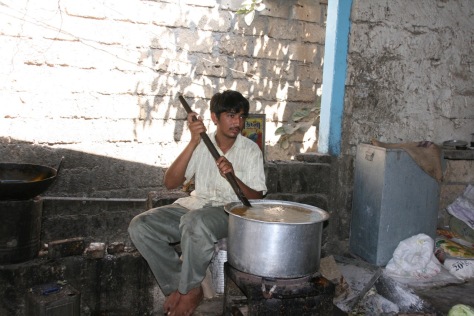
A huge pot of chai being prepared before it’s sent to consumers.
“Chai! Chai Chai! Garma garam chai!” (Tea! Tea! Piping hot tea!)
The young lad was going up and down the corridor at a bus rest stop between Ahmedabad and Nagpur, selling piping hot tea – the most popular drink in India, which is needed to start the day.
It is estimated that India consumes 837,000 tonnes of tea every year. The ritual of drinking chai transcends all boundaries, status and people. Chai wallahs are found everywhere you go – from office towers to roadside stops to railway stations – serving tea with masala (spices), sugar and milk. The thick sweet drink is the integral part of life in India.
Most Indians drink tea, like the British, at least twice a day – once at breakfast and again in the afternoon. It is considered a perfect drink for the country’s hot weather as it helps to trigger the body’s natural cooling reflexes.
Originally introduced by the British in India, chai has now become the national drink of the country, easily available on every street corner and on crowded train stations. At home, Indians serve chai to visitors and guests, becoming the second largest producer of tea, 70 percent of which is consumed at home.
During my travels to India, I have always enjoyed and loved to drink chai, especially masala tea. Even five-star hotels serve them. Apart from the Indians’ craze for chai, another thing that is typical in India is their street food. Although I have been warned several times against it, I have broken the rule and devoured delicious street food without any problem. There is something magical about street food in India as it tastes 1000 times better than regular food.

Street foods are very common on every corner.
India’s roads and through fares are crowded with vehicles, animals and people. The most convenient way to travel in India is by three-wheeled rickshaw, commonly called tuk tuk. The tuk tuk drivers are professionals who can maneuver through the traffic and ensure that you reach your destination on time while cars, buses, taxis and other vehicles remain caught up in traffic. On the weekend, whole families travel via tuk tuk for a Sunday drive or to attend a festival.
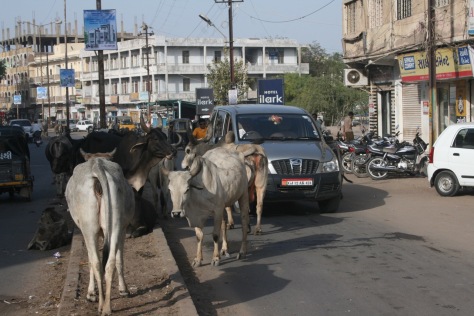 Cows seem to have right of way even on busy streets.
Cows seem to have right of way even on busy streets.
The tuk tuks are now widely used in Bangkok and the U.K. so much so that the largest importer, Tuk Tuk U.K., says the craze is spreading so quickly that it can’t get enough of them. Those seeking comfort and convenience can easily book a reasonably-priced private car with a driver in India. During one trip, I stood outside the hotel and summoned one of the taxis waiting outside and struck a deal whereby we were charged so much per day. The driver, who stayed with us for four days, gave me his card on the last day to pass on to friends and relatives coming to India.
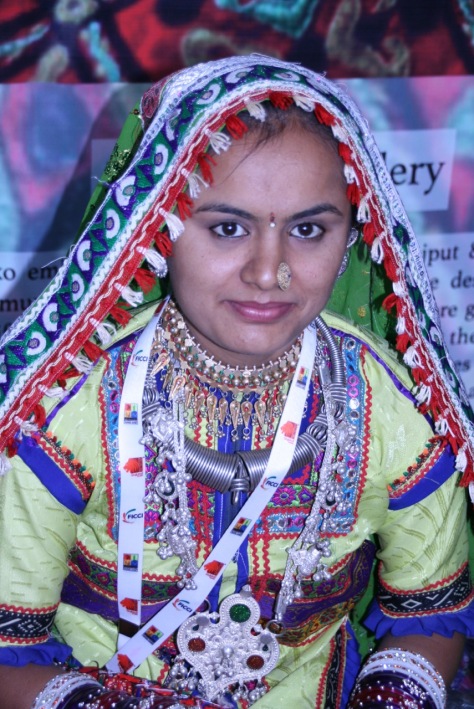 India is really a photographer’s paradise where one can take pictures of smiling people, crowds, dances, festivals, shops in the bazaar and busy streets.
India is really a photographer’s paradise where one can take pictures of smiling people, crowds, dances, festivals, shops in the bazaar and busy streets.
Visitors to India have to be prepared for the extraordinary adventures that the country has to offer – the sights, the smells and the snapshots of life in India. India, the immensely populated country with more than 1.2 billion people, provides excitement, sprinkled with aromas of food and spices, and providing glimpses of everyday life. It’s a photographer’s paradise, enabling you to record people’s everyday activities.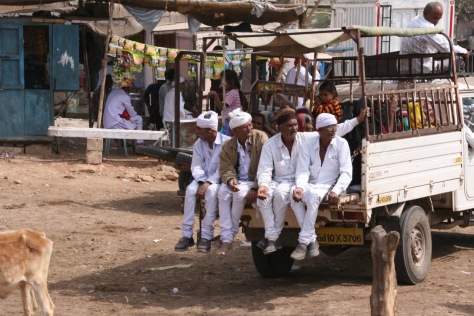 A crowded vehicle transports people to various places.
A crowded vehicle transports people to various places.
An unusual sight in India’s main streets is the freedom given to the cows. Considered to be a sacred animal by majority of Hindus, they wander freely, unmolested in traffic-choked streets. Vehicles will wait to allow cows to cross the street in preference to pedestrians who have to take a chance on their own, even if they are at a zebra-crossings. During festivals, the animal is worshipped and decorated.
The cow frenzy has extended to such an extent that most Indian states forbid cow slaughter. Opponents of cow slaughter ban have argued that cow meat is cheaper than chicken or fish and it’s a staple for the poorer Muslim, tribal and dalit (ex-untouchable) communities. Hence, cows are India’s most political and polarising animal, sparking clashes and religious tensions. Cows are greatly respected in Nepal and Burma too.
As an Indian friend pointed out, cows for Indians are like pets in western countries. “You don’t see dog meat, or cat meat or horse meat in the U.S. as they are animals found in people’s homes. Humans form a special bonding with such animals.”
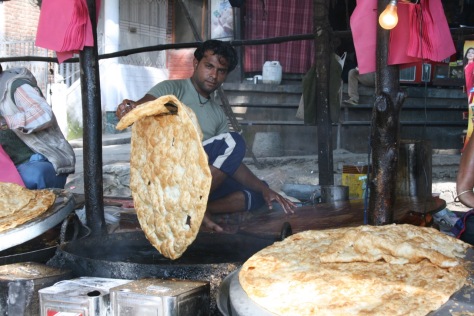
A cook prepares appetizing paratha for hungry customers.
Office workers residing in cities like Mumbai have the luxury of having a healthy, home-cooked meal, still warm from the stove, courtesy of a service provided by dabbawalas. The word “dabbawala” in Hindi means “one who carries a box,” usually a cylindrical tin or aluminium container. Rain, storm flood, dabbawalas will deliver on time.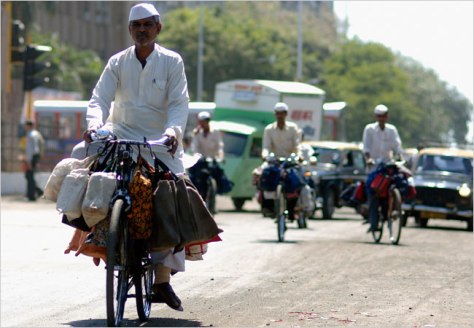 or Dabbawallas out to make rounds supplying home-cooked lunches for Mumbai’s office workers.
or Dabbawallas out to make rounds supplying home-cooked lunches for Mumbai’s office workers.
The system functions on precise timing, coinciding with train and bus schedules. Dabbawalas collect hot food from residences of workers in the morning and deliver to workplaces by bicycles and railway trains and return the empty boxes by the afternoon. Meal suppliers in Mumbai also use dabbawals from centrally located kitchens to the customers and back. Some work-from-home women also supply home-cooked meals through the dabbawala network.
 Colourful necklaces and beads sold at a stall in the bazaar.
Colourful necklaces and beads sold at a stall in the bazaar.
Dabbawalas are a common sight in Mumbai, easily identified. They are men clad in white kurtas, weaving their bikes through impossible traffic and swarming throngs, juggling multiple tiffins — circular silver tins with four to five compartments, each packed with food — that are destined for office buildings and school yards. Approximately 5,000 distribute over 200,000 meals a day, picking up the tiffins in the morning from women, who have packed steaming, spicy dishes into each compartment: a curry, vegetables, dal (lentils), and flatbread (with some variations).
This is the only and best way to lunch for many Mumbai residents — on a feast, made with the love of a mother or wife. It’s no wonder that majority of Mumbai’s office workers prefer to eat home-cooked food rather than eat outside at a food stand or at a local restaurant.
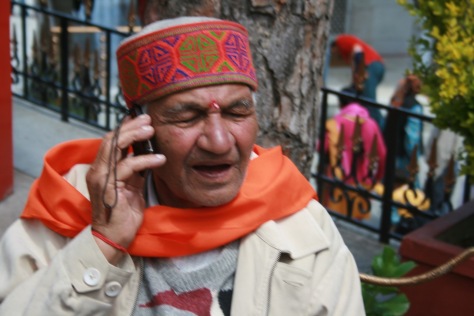
India’s residents are heavily dependent on using mobile phones information, education, business and shopping.
A recent trend among Indians is their high dependency on mobile phones. A common sight in India today is seeing someone talking on the mobile phone. Phone companies have excitedly reported that last year, India crossed one billion mark in mobile phone ownership. China is the only other country crossing the one billion mobile users landmark in 2012. The user base in India has climbed dramatically due to the affordability of the devices and cheapest tariffs in the world.
“The little device in Indians’ pocket or purse has become their window to a world of information, education, livelihood, employment and even shopping,” according to a local phone official.
India’s mobile revolution is just beginning. Research firm eMarketer has predicted that India will become the world’s second largest market for smartphones and overtake U.S., exceeding 200 million smartphone users.
No doubt, there is more to Incredible India than meets the eye. Visitors just have to choose what fascinates them to enjoy its rich culture, classical dances, colourful festivals and exquisite cuisine.
* Mansoor Ladha is a Calgary-based travel writer, columnist and author of Portrait in Pluralism: Aga Khan’s Shia Ismaili Muslims. His second book, Memoirs of a Muhindi is scheduled to be published by Regina University Press in in April 2017.
